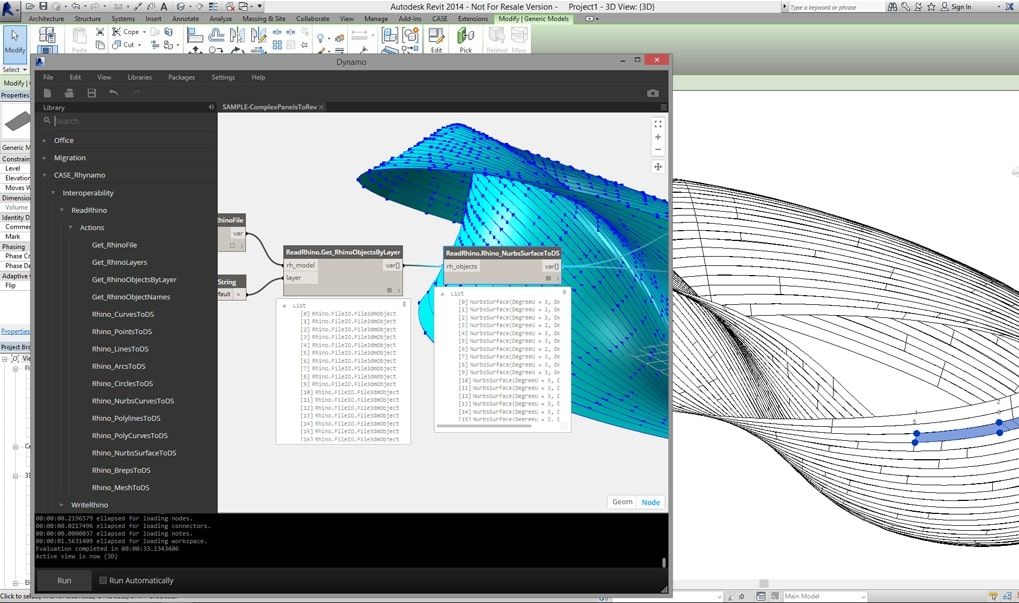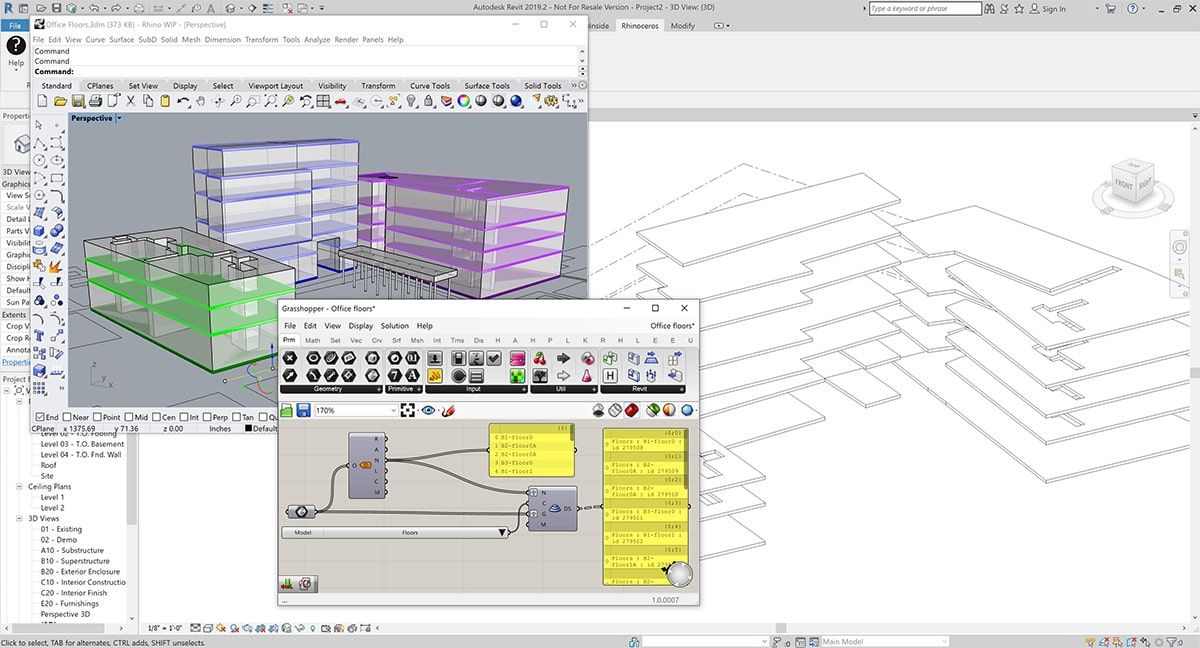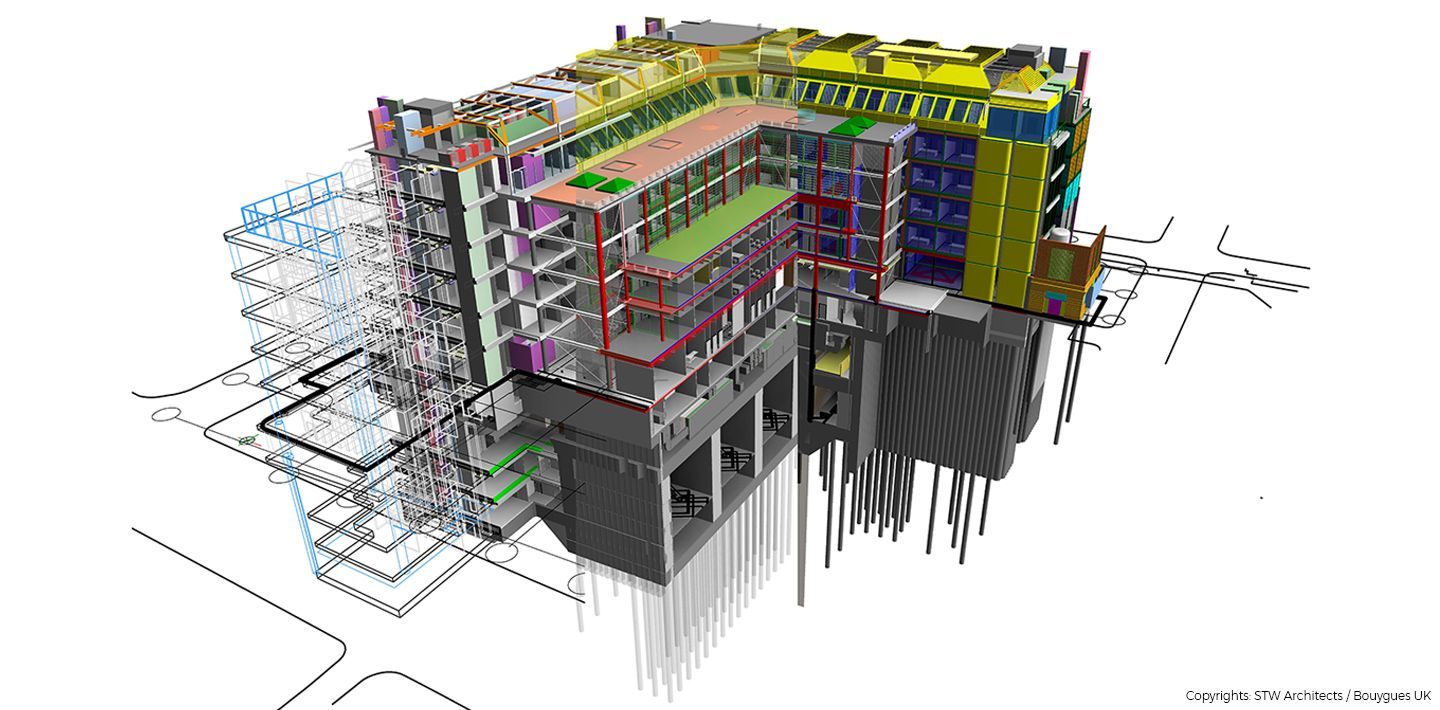Streaming Now – Novatr’s story on The Indian Edtech Story, only on Jio Hotstar.
PROGRAMS
Join thousands of people who organise
work and life with Novatr.
7 Universally Popular Revit Plugins for Effective BIM Workflows
Thet Hnin Su Aung
8 mins read
May 17

7 Most Commonly Used Revit Plugins
1. Ideate

Ideate Explorer (Source: https://apps.autodesk.com/en)
Ideate is a Revit plugin with a set of BIM tools that will make designers happy with their workflow. Though this is not an official Autodesk Revit plugin, it works dynamically for a more streamlined workflow.
The tools are divided into :
•Ideate Explorer - a browser tool to boost the Revit model browser. It not only performs browser functions but can also search and filter parameters, links or any issues within the model.
•Ideate BimLink - coined as a data management solution, it allows the user to export data to and from Revit and Excel easily and accurately. The data edited in Excel can be imported back into Revit, updating everything in the model automatically.
•Ideate Sticky - Any non-BIM associated data can be shared with the team. Tables and graphs created in Excel or Microsoft Word can be linked to the Revit models.
•Ideate Apps - A collection of 9 tools to combat the tedious tasks in Revit for more efficient access to the data, amplifying the productivity of the project
•Ideate StyleManager - addresses the unorganised style issues during content import to the model, making the task of analysing and cleaning up less time-consuming while reducing errors.
2. Dynamo

Dynamo interface in Revit (Source: https://dynamobim.org/)
Dynamo is a plugin well-known to many Revit users. Simply put, it is a visual programming language, or a set of instructions, for Revit that enables visual logic creation for parametric designs and automation processes.
Its abilities to create models with complex geometries while minimising human error, to automate and export data efficiently have made Dynamo, as a Revit plugin, a staple tool for BIM. Minimal programming knowledge is required, as programs are created by manipulating ‘nodes’ rather than typing codes. These nodes define the relationships and action sequences to create the end design.
Dynamo is an open-source tool and can be run in either stand-alone mode or as a plugin for Revit.
3. pyRevit

pyRevit toolbar in Revit (Source: https://architectcoding.wordpress.com/)
Have you ever noticed small issues in Revit that seem irrelevant and yet hinder the workflow? A Rapid Application Prototyping (RAD) environment for Revit, pyRevit provides a set of solutions to many common issues faced by Revit users.
Why is it a favourite of many users? Some of the tools of pyRevit include but are not limited to; Batch Sheet maker (for producing multiple sheets quickly that Revit alone otherwise cannot perform efficiently), revisions on multiple sheets can also be activated all at once; and perhaps one of the best tools for users, all views can be synced to the same zoomed area so that there is no need to zoom and pan repeatedly.
Fundamentally, any automation process or add-on ideas can be sketched out using pyRevit in Revit with its APIs (Application Programming Interfaces). Distribution of tools across the team is also feasible with a unified interface.
4. Rhino.Inside

Rhino.Inside workflow (Source: https://www.rhino3d.com/)
It is a platform for a powerful integration of Rhino and Revit, with a plus of Grasshopper (the most used Rhino 3D plugin), providing the necessary tools to link BIM technology and Rhino’s free-form modelling. This significantly enables design creation with numerous possibilities and workflows. What more can an architect ask for! Rhino.Inside allows utilising Revit’s APIs (Application Programming Interfaces) with Grasshopper and Rhino plugin.
Native models are created using Revit components and Grasshopper scripts, streamlining the BIM workflow for parametric design. In addition, Rhino.Inside, as a Revit add-in, enables information transfer between these tools smoothly and intuitively. Another advantage to making architects happy? One does not need to know coding languages or be a computational design expert to create projects with Rhino.Inside.

5. C#
C# is mainly used for creating custom Revit plugins and components. It is a programming language that runs on Visual Studio by Microsoft on .Net Framework, a software development framework that supports building and running applications including websites and apps on Windows. In addition to plugins, C# can develop apps (desktop, mobile and web), games etc.
Think of it as humans using languages for communication; C# is one of the language options for the Revit plugin development; it is quite straightforward to understand and modify as the program can be broken down into parts. The work in C# is created as Class Libraries, with .dll file extension. It is also one of the scripted components for Grasshopper that allows custom logic for Grasshopper component creation.
6. Enscape

Enscape render (Source: https://enscape3d.com/)
Enscape as a Revit plugin is simple to use, with easy control and no need to export a file. It essentially amalgamates high-quality visualisation with BIM modelling. Real-time rendering, or even walkthroughs, enables instant assessment in meetings with stakeholders and clients, hence it speeds up response time to find solutions.
As Enscape works within Revit, it also makes use of Revit materials, in addition to grass, cloud and time of the day adjustments, so there is no need for a new set of materials for rendering. With its export function, users can produce stand-alone render files, panoramas and videos to share with the team and clients; even batch export is available! Enscape further Revit’s collaboration function with its annotation feature for continuous communication within the team.
7. Rushforth tools

Rushforth toolbar in Revit (Source: https://www.rushforthprojects.com/)
One of the frequently mentioned Revit add-ins is Rushforth which offers multiple features that can boost productivity for its users. To name just a few of its features: Parameter Transformer enables filtering by parameter and modifying those of multiple families simultaneously. Model and element data can be exported and imported to and fro Excel for manipulation and calculation.
On the other hand, views and sheets can be created with Project Setup automatically according to levelling in the project. Basically known as View and Sheet Creator, it helps create and modify views and their properties, while also providing sheets.
All these tools amplify Revit’s strength for BIM workflows with better efficiency and intuitiveness. Most, if not all of them, are continuously getting updated, as Revit software itself also gets updated from time to time.
See yourself mastering Revit and becoming a BIM expert? Learn abundant Revit and BIM workflows with Novatr’s BIM Professional Course. For more BIM-related articles, check out our Resources page.

Join 100,000 designers who read us every month


